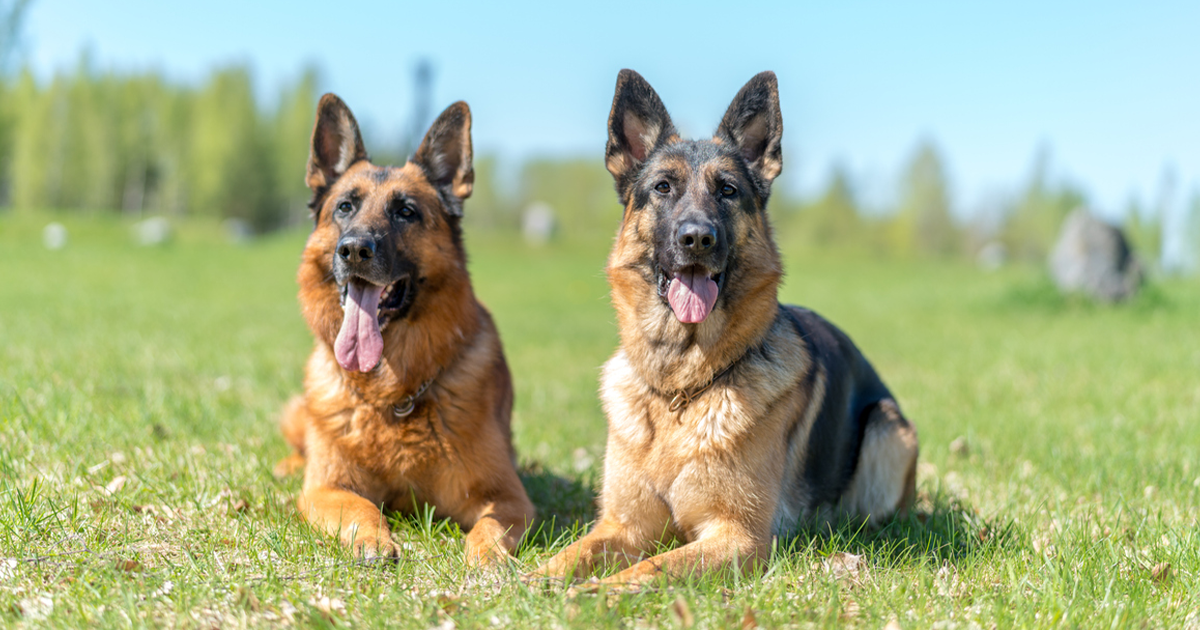Welcome to the BarkPost guide to dog breeds where we belly flop straight into the depths of dog breed origin, evolution, and purpose. Follow along each week as we publish new guides that highlight the strangest, most interesting, and most surprising stuff about these creatures who have been our best buds the last 30,000 years.
Intro / Overview
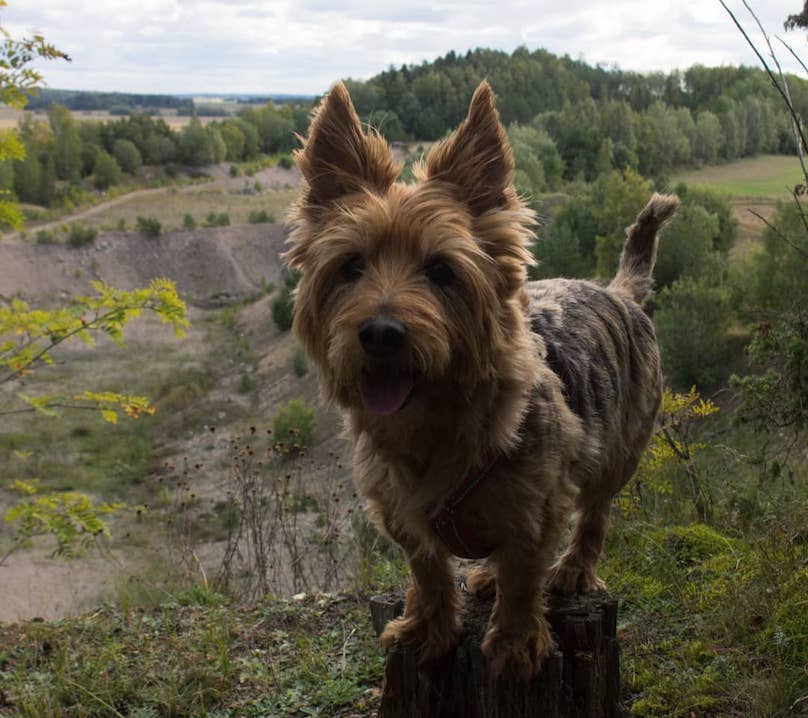

(All dogs are individuals, which means any single dog from any breed can be any number of ways, both good and not so good. Keep that in mind as we discuss breed generalities!)
This breed is the embodiment of the age-old idiom, “good things come in small packages.” Don’t let this petite pup fool you, the Australian Terrier is full of brains, spunk, and tenacity. Though the Australian Terrier breed sure is toy-sized, this breed belongs in the Terrier Group and has all the terrier instincts prove it. In fact, this breed is the littlest of the working terriers. Like others in this breed group, the alert Australian Terrier loves to dig and chase small critters.
Bred to be both a helper and companion, you truly get the best of both worlds with an Australian Terrier. They are skilled and diligent workers as well as loving and devoted companions. This is especially noted in their affinity towards children, the elderly, and individuals with disabilities. Read on to learn more about the incredible Australian Terrier!
Also Known As…
Aussies (not to be confused with Australian Shepherds, also commonly referred to by this nickname). “Basically, they’re like Yorkshire Terriers, except they’re really good at doing an Australian accent.”
Origins
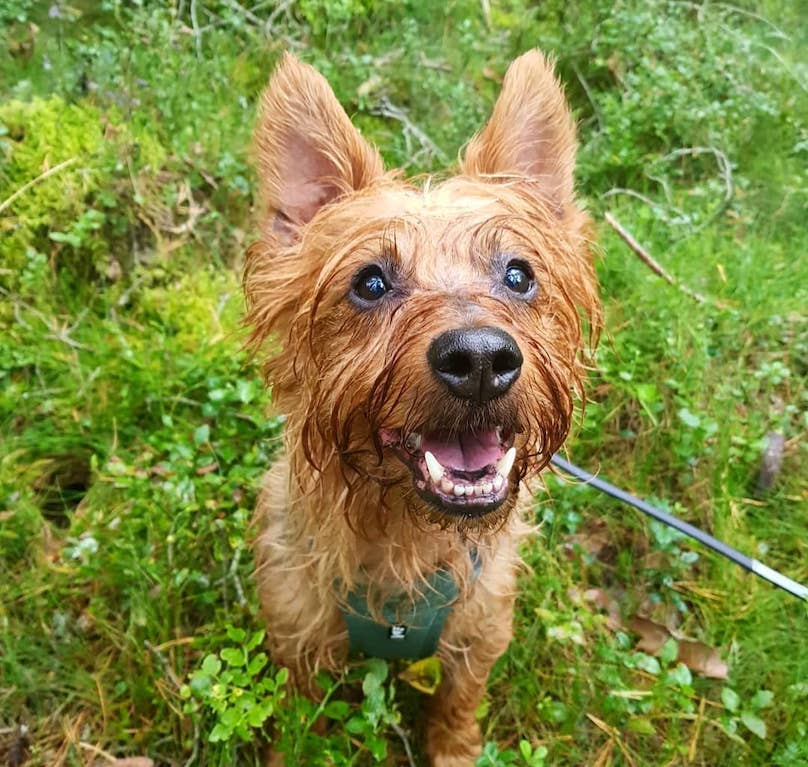

As the name suggests, the Australian Terrier hails from the great “Down Under” a.k.a. Australia! During the 19th century, working terriers were among the relics of home British settlers brought to Australia. It is thought that interbreeding British terriers – such as the Cairn, Skye, Yorkshire, Scottie, Norwich, and Dandie Dinmont Terriers – resulted in the Australian Terrier we know and love today. Aussies were bred to be courageous, hardworking, all-purpose exterminators.
This breed’s most common targets were small mammals and snakes. How could such a teeny terrier take on a snake? One breed historian reported that this breed used a “leap-twist-and-pounce” tactic in exterminating snakes. Their history as exterminators lives on in today’s Australian Terriers. Modern-day Aussies inherit this drive for digging and chasing – however the targets are typically flower beds and suburban critters.
Raised with little company in Australia’s remote areas, Australian Terriers formed tight-knit bonds with their human companions. This love and loyalty remains present in Aussies. They are outgoing people-lovers who love nothing more than being part of a family!
The Australian Terrier often boasts the title of “Australia’s Dog.” In fact, the American Kennel Club (AKC) reports that it was the “first native breed to be officially recognized in its homeland and the first Australian breed to be recognized in other countries.” The Australian Terrier eventually became a recognized breed by the AKC in 1960.
Size
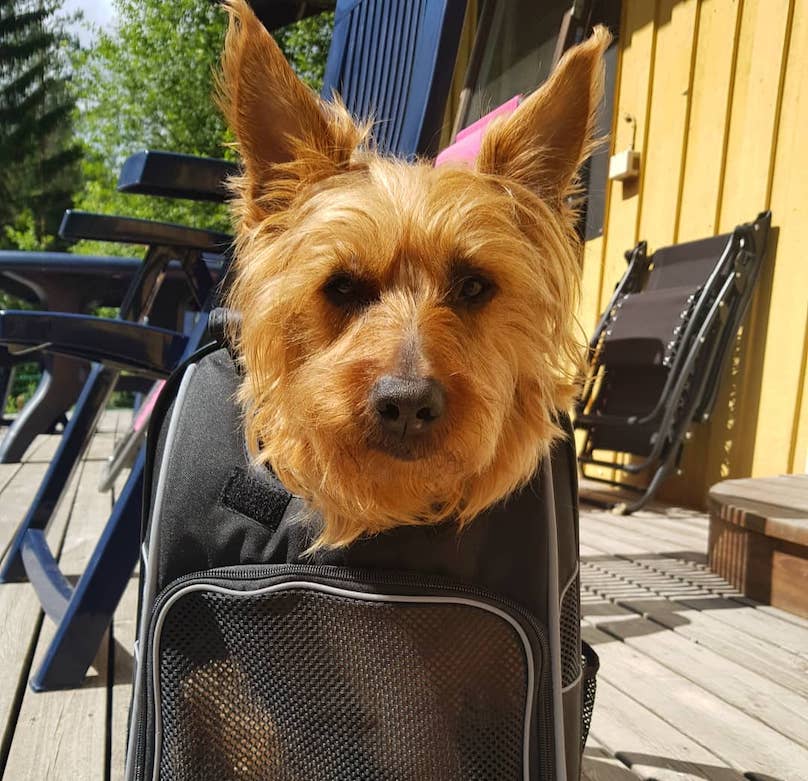

These tiny terriers are shorter than a ruler! Australian Terriers typically stand 10 to 11 inches at the withers (tops of shoulders).
Weight Range
On average, Australian Terriers weigh 15 to 20 pounds on average.
Personality
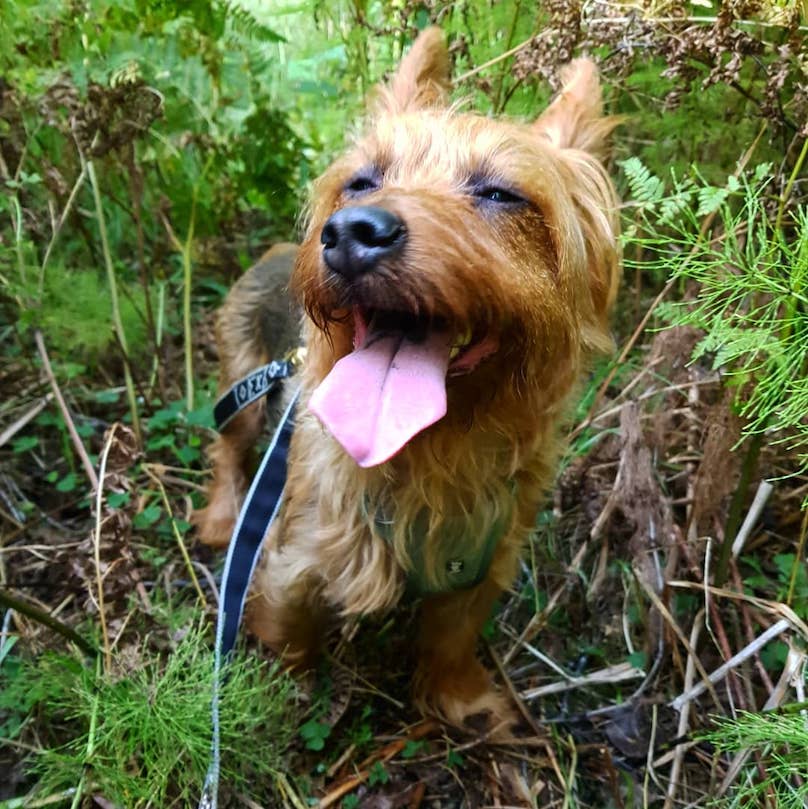

This pint-sized pup packs a whole lot of personality! With an Australian Terrier, you get a lot of dog in a tiny package. This breed is energetic, fun-loving, and outgoing. Stricken with a bit of Napoleon Syndrome, the small and mighty Aussie carries the confidence of a large dog. They’re cheeky with some attitude – so there’s never a dull moment with an Australian Terrier!
Despite the sass, Aussies are remarkably sensitive and loyal to their pup parents. Since the breed’s development, Australian Terriers have been incredibly devoted companions. They are extremely people-oriented and are happiest bonding with their families.
Don’t underestimate this tiny breed – Australian Terriers are excellent workers. A classic terrier, the Aussie is very alert, tenacious, independent, and even makes an excellent watchdog. Instinctual urges from their exterminating origins results in terrier tendencies. These include digging and chasing little, furry critters around the yard. However, with proper training, these behaviors can be managed.
Intelligence / Trainability


Australian Terriers are definitely brainy! Developed as working dogs, Aussies are intelligent and quick learners. Despite their smarts and agreeable disposition, they are considered moderately trainable.
Australian Terriers are so smart that they grow easily bored of repetitive training. Plus, at times their willful and stubborn sides takeover. This poses challenges to keeping Aussies engaged in training.
Keep training fun, dynamic, and increasingly challenging to captivate your Aussie’s interest! This attention-seeking pup responds very well to positive reinforcement training. You can employ this by showering your Australian Terrier with praise and treats after performing the desired behavior. Also, it is important that training is firm and consistent (but never harsh) to keep the strong-willed Aussie at bay.
Ideal Environment
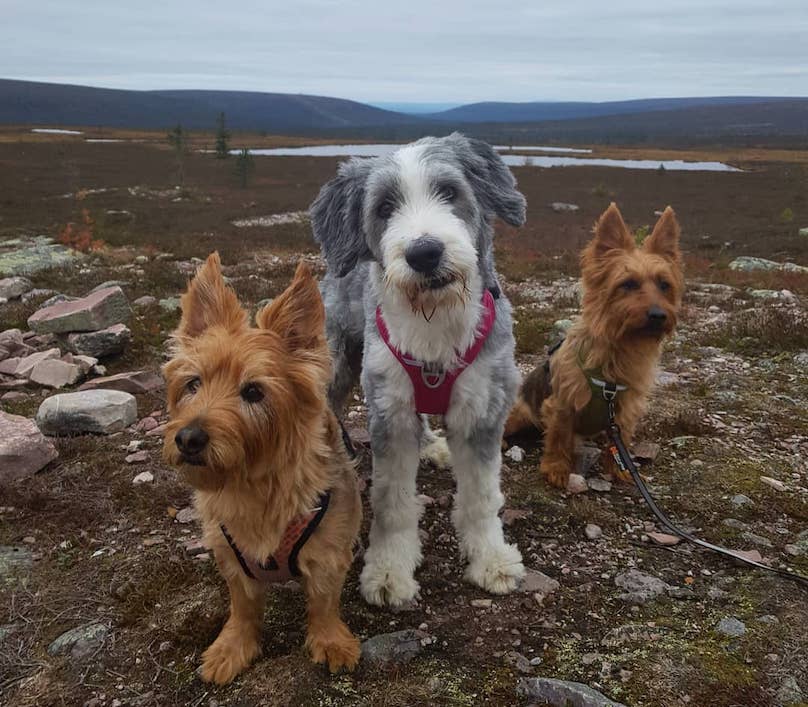

The Australian Terrier’s ideal environment is in a home snuggling or playing with their family. Though the Australian Terrier is a sturdy breed, this pup craves to be with their family. Therefore, this dog does not fair well being left outside while their companions are inside.
Aussies can adapt to apartment living. However, apartment dwellers must be able to provide an Australian Terrier sufficient, daily exercise.
Like a typical terrier, they’re active and love roaming around the yard. Because of their drive to chase smaller animals, Australian Terriers should only be off leash in securely-fenced yards. This prevents their instincts from being able to carry them away.
Good For Families And Kids?
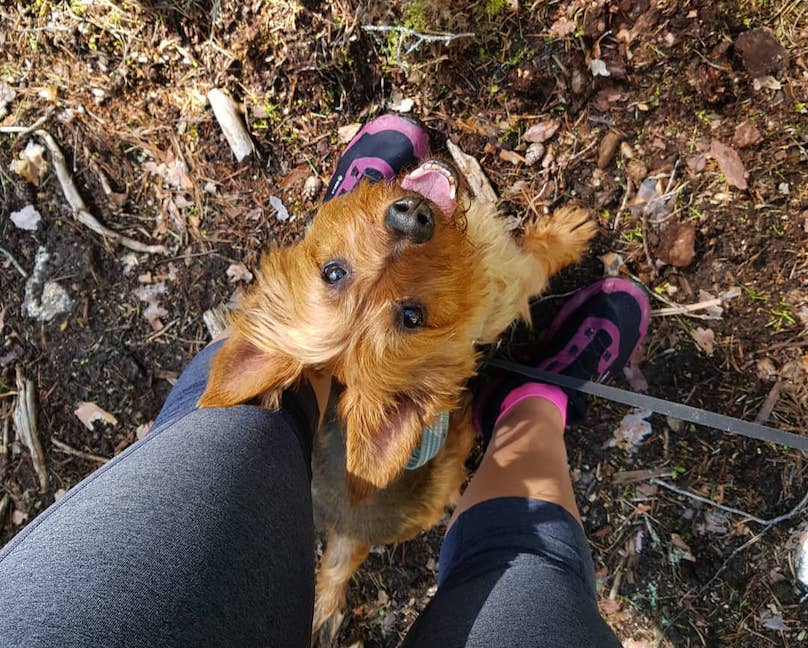

Looking for a family dog? Look no further! Australian Terriers adore people and love nothing more than belonging to a family. Whether it is acting as a shadow, greeting new friends, or playing with children, Aussies crave being a part of the action. Because of this devotion, Australian Terriers do not fair well being neglected or left alone for extended periods of time. Thus, these pups pair best with families with the time to attend to their attention needs.
As we mentioned, Australian Terriers are praised for their compatibility with people of all ages and all abilities. While they are active and spirited, Aussies are also patient and kind. These pups are well-suited companions for the elderly, children, and those with disabilities. Though they are not ordinarily reactive, like any dog, the Australian Terrier has their limits on roughhousing and prodding. Be sure that any small child around a dog is taught how to interact with dogs respectfully and gently.
Average Lifespan
Australian Terriers typically live 11 to 15 years.
Health
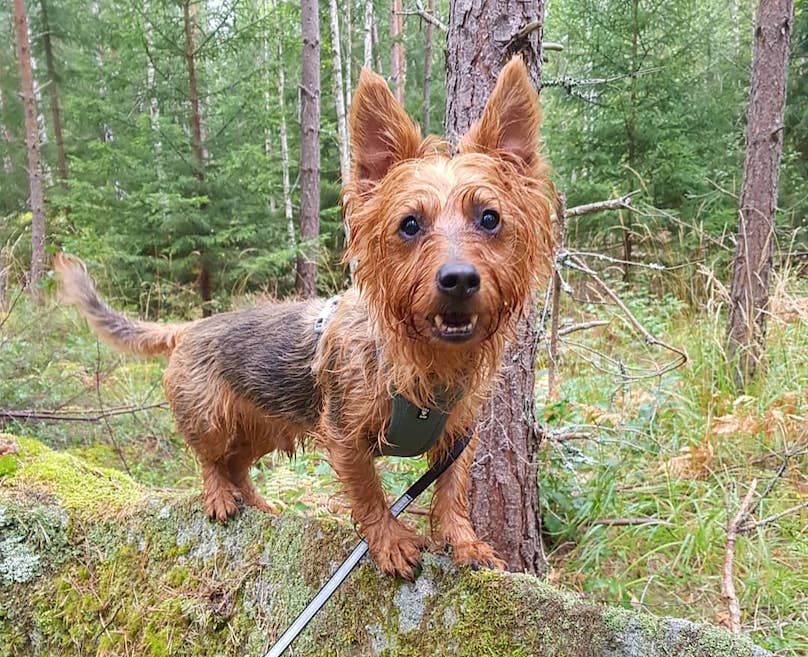

Australian Terriers are hardy breeds with relatively few health problems. However, like any breed, there are certain health conditions they are prone to. This includes luxating patella and Legg-Calve-Perthes disease. Some Aussies also develop a malformation of the hip that occurs at a young age but can be corrected with surgery.
Energy
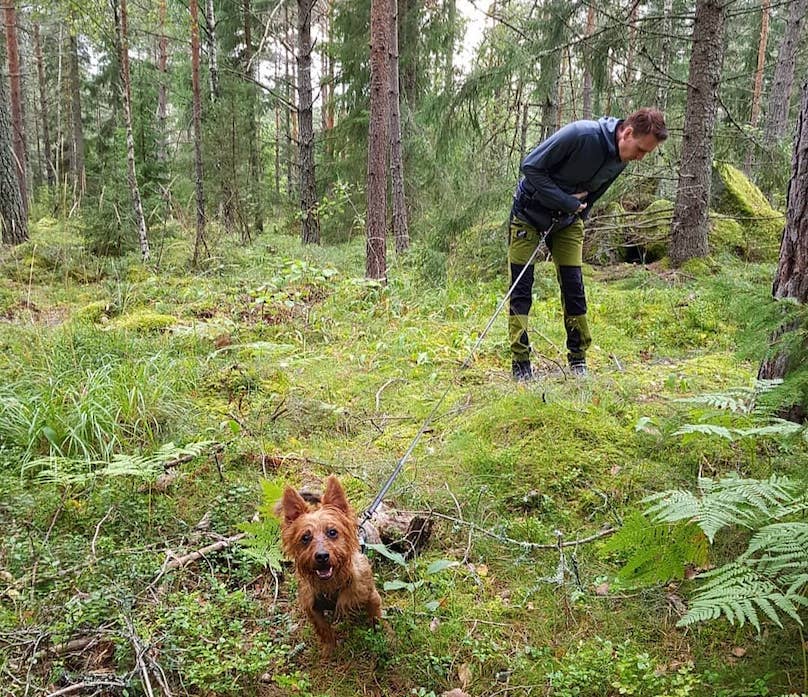

While they are the size of lapdogs, Australian Terriers are certainly not couch potatoes. These pint-sized pups are bundles of energy! They love being active and need sufficient daily exercise. Insufficient exercise may lead to boredom, unhappiness, and undesirable behaviors. Thankfully, these tiny terriers can be exercised both indoors and outdoors. As previously mentioned, Australian Terriers should only be let loose in securely fenced areas.
Friendly With…(Dogs? Strangers? Cats/Other Pets?)
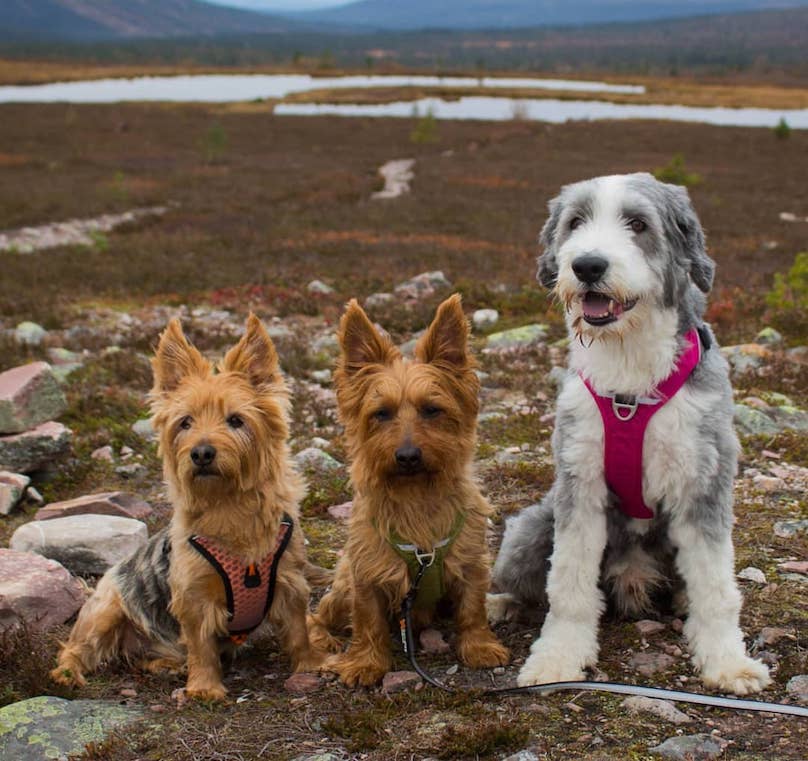

Australian Terriers are devoted companions who crave their pup parent’s attention. They don’t always do well living with other dogs since they’d rather have their pup parents all to themselves!
Since this breed was developed to pursue and kill little critters, it is not a great idea to mix them with small animals. Squirrels, mice, rats, rabbits, and other rodents may trigger these deep-seated instincts.
Coat & Grooming
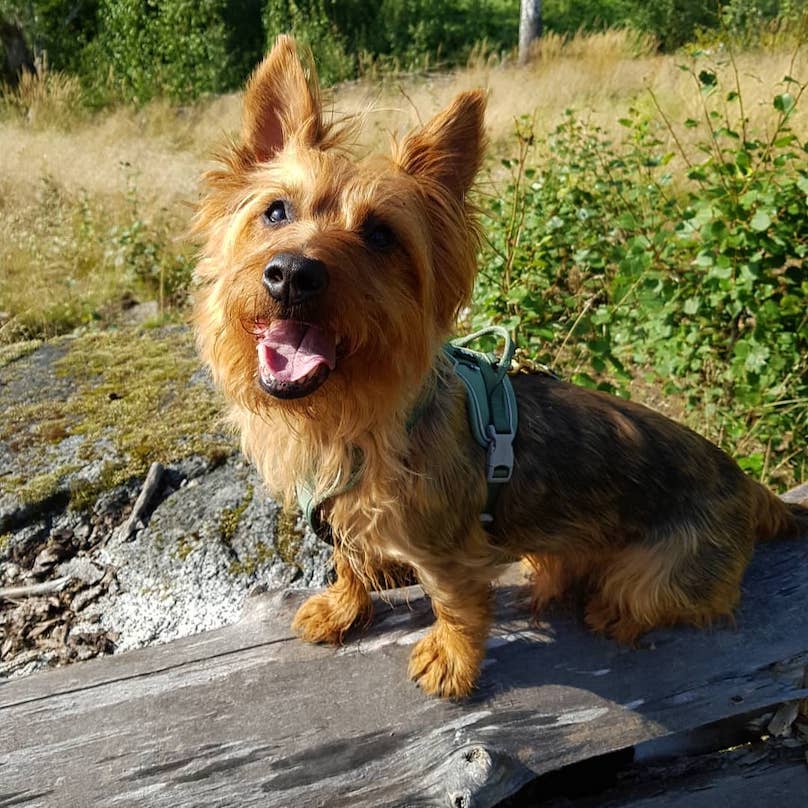

A long torso and short legs makes up the Australian Terrier’s distinct body shape. They have rough, shaggy coats with distinctive “coat furnishings” around their necks and front legs. Color variations include blue-and-tan, solid red, or sandy.
This impressive double coat is durable and waterproof. Meaning, it is quite effective in repelling mud, dirt, and is generally low maintenance. Australian Terriers shed infrequently and simply need a weekly brushing to keep their coat neat. Long hairs in between or in front of the eyes may sometimes irritate the eyes. This can be easily repaired by plucking problem hairs with tweezers or fingers.
Unlike with humans, with Australian Terriers the harsher the hair the better. The coat’s harshness aids its dirt-repelling ability. Shampooing softens the hair and thus decreases this ability. Thankfully, Australian Terriers only need the occasional bath!
Toys Australian Terriers Would Like Best
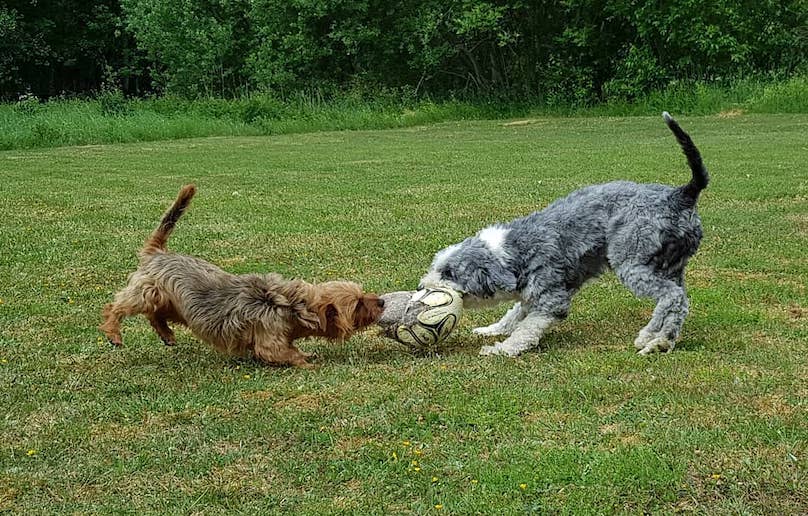

Use playtime as an outlet for your Australian Terrier’s exterminating instincts! Since this breed was developed for pursuing small, furry critters, they may respond well to smaller Plush Toys that squeak and make other fun noises, like “Monseur Acorn.”
Fetch Toys like the “Best Balls Ever” are also a great option.
And if they’re into tugging like the dog above? Try out some Tug Toys! They’re fun for the both of you!
Recommended Diet Or Supplements
Australian Terriers should be fed high-quality dog food. It is also important to ensure that this food is appropriate for the dog’s age range (e.g. puppy, adult, senior).
Since this breed is prone to certain joint conditions, it can never hurt to bolster the health of their bones! A high-quality supplement can support your Australian Terrier’s bone and joint health.
Glucosamine Supplement For Hip & Joints
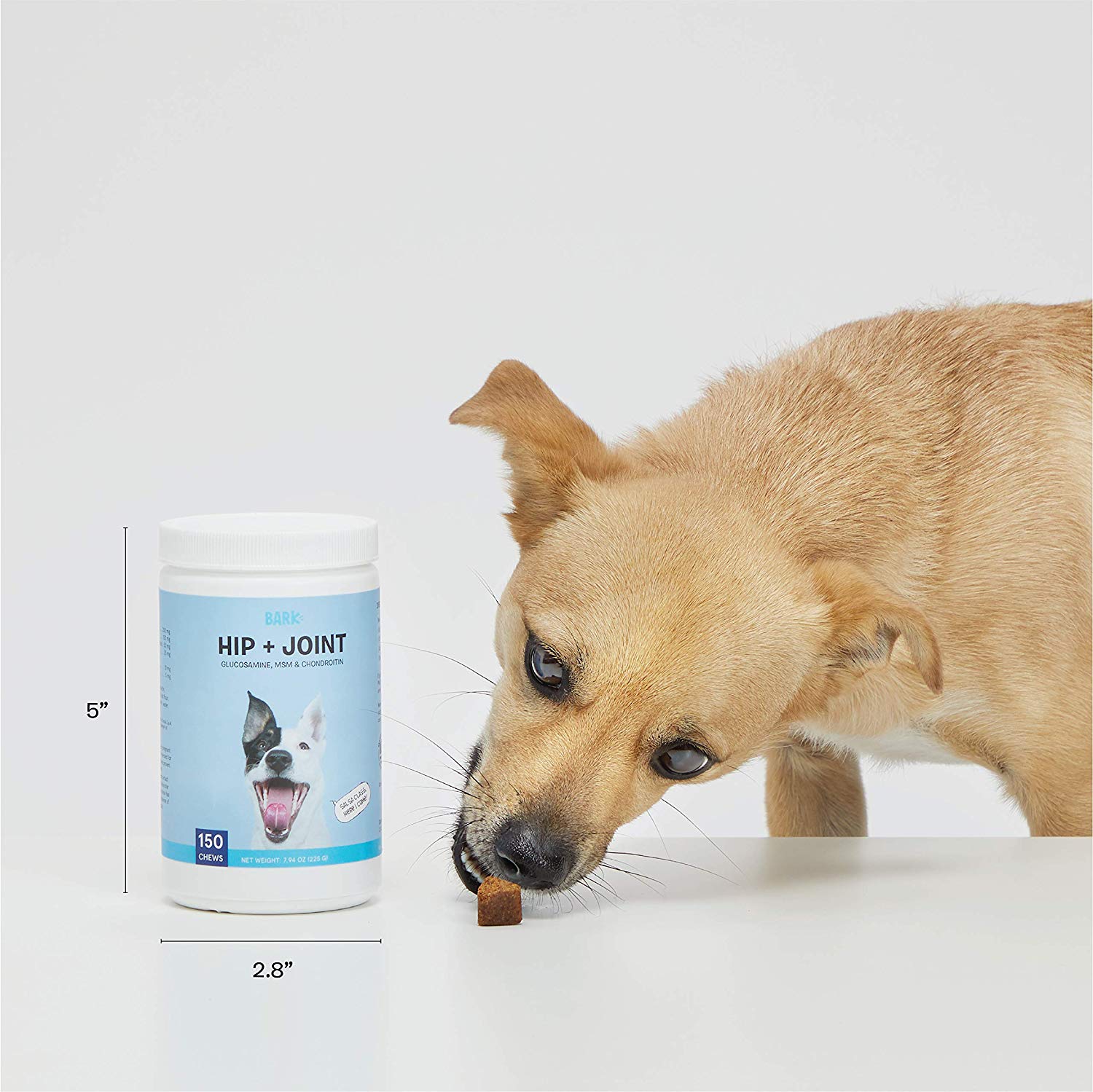

Bark Hip + Joint soft chews are veterinarian-formulated in the USA with powerful ingredients like glucosamine, MSM, chondroitin, and hyaluronic acid to keep your dog’s joints strong, flexible, and pain-free. ($32.99.)
Recommended Products
For Australian Terriers with joint issues – or any dog who just loves to lie around! – a nice comfortable bed with orthopedic support is probably a good idea.
Orthopedic Ultra Plush Memory Foam Dog Bed
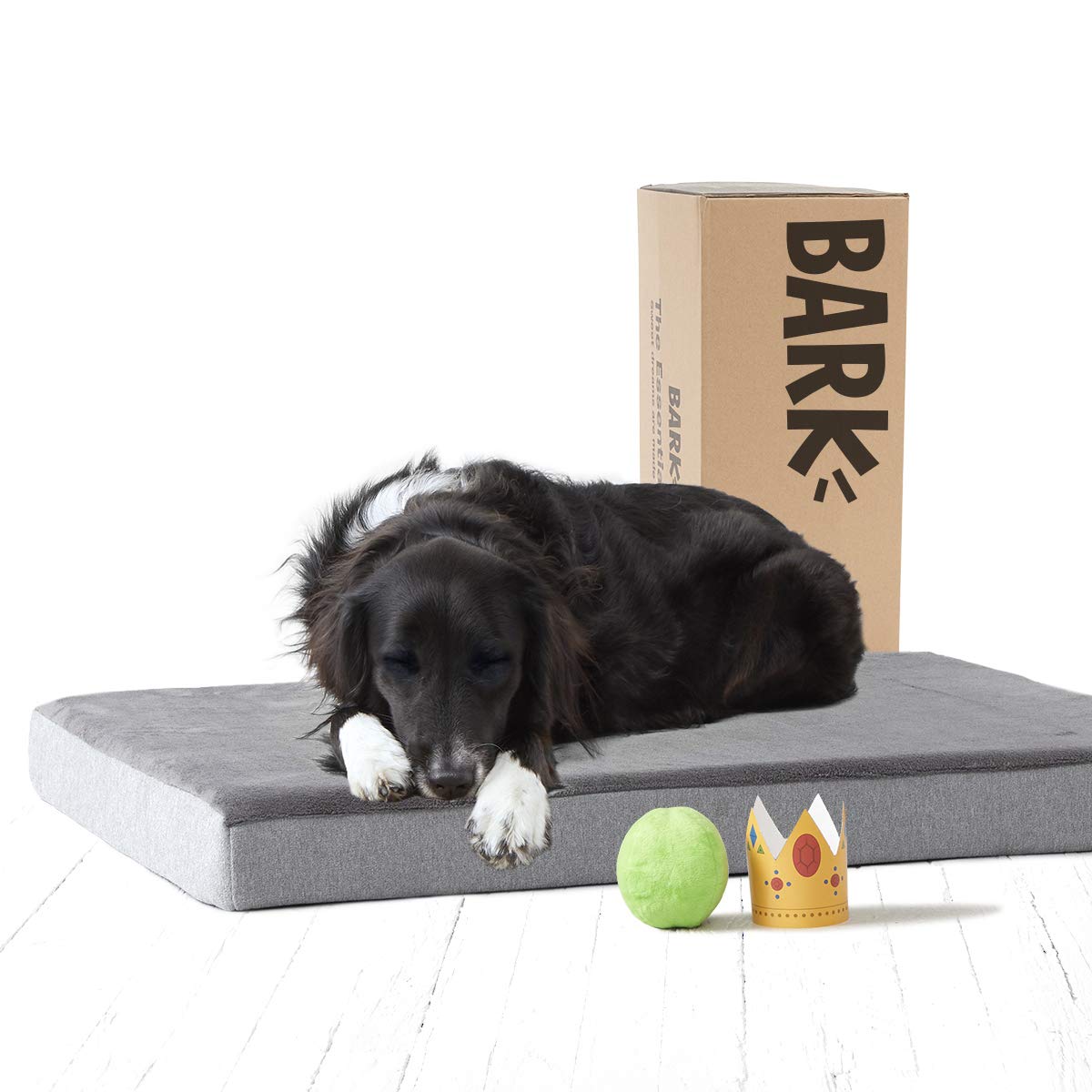

Orthopedic dog beds from Bark are made with ergonomic memory foam and gel foam to cradle joints and relieve the stress on pressure points. They help ensure your best friend gets a good night’s sleep, free from body aches. Just be sure to order the XL! ($64.99.)
Notable Rescues To Find The Australian Terrier Of Your Dreams
Notable Instagram Australian Terriers
Skoj, Skrot, and Ziggy @skojventures
Ryder @ryder.ozterrier!
Abby @theabbyhour!
Simba @australian_terrier!
***Looking for a gift to blow your pup’s mind? Spoil them with BarkBox! Every month BarkBox delivers 2 original toys, designed in-house, 2 full bags of all-natural treats, and a chew. Sign up here and receive a free extra toy every month. <– This deal is worth up to $120 in value if you sign up for a 12-month subscription! 🙂
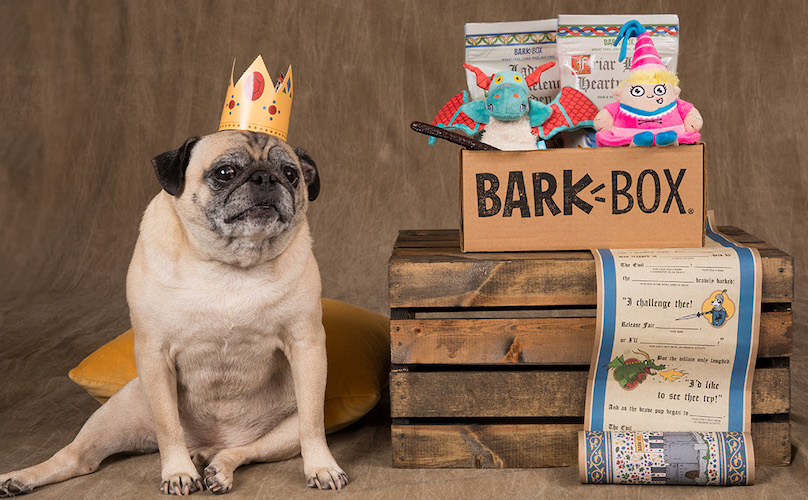

Featured image via Skojventures/Instagram
Want More Terrier Breed Guides Like This?
Yorkshire Terrier Breed Information Guide


